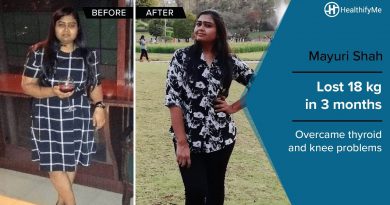BioSignature for Fat Loss
Biotyping is gaining popularity amongst health care professionals, personal trainers and nutritionists. It is a concept whereby nutrition recommendations are individualised to your metabolism and biochemical individuality to help you lose weight or improve your health. One particular biotyping concept that is gaining popularity is BioSignature Modulation developed by Charles Poliquin. It is a very quick and non-invasive way to establish body composition (body fat percentage compared to muscle mass), regional fat distribution and hormone profiles.
Poliquin believes we accumulate fat in certain areas because certain hormones are too high, too low or just out of balance and is based on 30 years of his own data. There is research to suggest that higher body fat levels disrupt hormones causing diseases such as diabetes, heart disease and cancer and there is also evidence to support some of Poliquin’s assertions of hormones causing regional fat distribution.
The BioSignature system works around 6 different hormones causing regional fat distribution:
- The androgens – bingo wings and man boobs
- Insulin – muffin top
- Oestrogens – saddlebags
- Cortisol – pooch belly
- Growth hormone – chubby knees and calves
- Thyroid hormones – fat over the ribs
Androgen type
In obese men a decline in testosterone is observed, whereas in obese women there are higher levels of testosterone such as those seen in polycystic ovary syndrome (PCOS). However the BioSignature system suggests excess fat on the triceps (back of the upper arm) indicates low androgen levels (male sex hormones) including testosterone.
Research from California on healthy young men found that lowering their circulating testosterone lead to increased fat storage on the appendices and abdomen, whereas elevating testosterone concentrations above normal levels caused fat loss in these areas. Similarly, in male adolescents with lower DHEA – a precursor to androgens – there were significantly lower levels of mid arm muscle mass compared to boys with normal levels of DHEA. Research from the Netherlands reported that free testosterone levels were correlated with the shoulder blade to triceps skin fold ratio in females.
Excess fat on the chest indicates the conversion of male sex hormones to female sex hormones. Research from Canada demonstrated this conversion of hormones was between 6 and 30 times greater on the torso than on the abdomen.The Department of Paediatric Endocrinology at Süleyman Demirel University in Turkey suggested circulating leptin – a hormone released from fat cells – stimulates the conversion of male sex hormones to female sex hormones causing breast tissue to grow in boys. The more body fat you have, the more leptin you release which changes your hormones and tells your body to grow man boobs.
If you have this regional fat distribution on the arms and chest boost your testosterone naturally by consuming more protein, magnesium, zinc and B vitamins and eat foods containing flavonoids that naturally reduce the conversion of male hormones to female hormones. These nutrients include quercetin, naringenin, chrysin, daidzein and genistein found in flax seeds, apples, berries, onions and green tea. Resveratrol, a polyphenol found in red wine has also been found to help.
Insulin type
A regional fat distribution on the shoulder blade and top of the hips – the muffin top – reflects insulin resistance. Research from The Medical College of Wisconsin suggests that the shoulder blade skinfold may help identify pre-menopausal women at risk for type 2 diabetes. Additionally research from Spain reported that both obese pre-pubescent boys and girls had significantly elevated values of insulin and glucose that were correlated with the muffin top and shoulder blade skin fold thickness. Research from the Department of Human Biology at Maastricht University reported that shoulder blade skinfold thickness remained significantly associated with persistent impaired glucose tolerance.
Consume more fish oil and eat a higher protein, lower carbohydrate diet as well as eating regular meals with additional fibre to stabilise blood sugar. The prestigious Journal of the American Medical Associationreported that a low GL diet helps to reduce insulin, triglycerides and aids weight loss in overweight and obese people.
Various herbs such as fenugreek, bitter gourd and gymnema silvestra lower blood sugar, inhibit glucose uptake in the small intestine and have adaptogenic properties on insulin production. The spice cinnamon has been shown to improve insulin function and possess blood sugar lowering properties says a scientific review from Thames Valley. Cambridge University demonstrated that a diet rich in vitamin C lowered the risk of developing diabetes by 62% and chromium deficiency is associated with insulin resistance and type 2 diabetes. Chromium supplementation improves insulin sensitivity, reduces blood pressure and reduces free radical damage to DNA.
Thyroid type
Fat stored on the ribs cage midway between the armpit and the top of the hips reflects levels of thyroid hormones with a low body fat score here indicating a healthy thyroid. There is research to suggest that as waist circumference (generally measured at the narrowest part between the ribs and the hips) and BMI increased T3 and thyroid stimulating hormone (TSH) levels increased whereas T4 levels decreased suggesting a change in thyroid function. However at present more research is needed to support the claims of the rib cage site reflecting thyroid function.
Nutrition recommendations for this site include eating fish, onions, asparagus for iodine and poultry, fish, almonds, pumpkin seeds and sesame seeds for tyrosine as these nutrients make the thyroid hormones. Foods containing selenium, zinc, vitamin A, vitamin D, vitamin E and vitamin B6 help the conversion of the inactive form of thyroid hormone (T4) to the active form (T3).
Cortisol type
Fat on the tummy region reflects excess exposure to the stress hormone cortisol. Research from the University of California demonstrated that women with a higher waist to hip ratio and central obesity reported more chronic stress and secreted significantly more cortisol during a stress test than women with a low waist to hip ratio. Similarly research from Spain demonstrated that disrupted cortisol levels lead to a distribution of fat on the abdominals.
Removing and reducing your exposure to stressors thus reducing cortisol is called for to reduce abdominal fat accumulation. Poliquin suggests one of the most common stressors to our system is the consumption of foods that we are intolerant to. These include wheat, dairy, soy, eggs, nuts, yeast and corn. Simply reducing exposure to these foods may reduce the stress on the gastrointestinal and immune system lowering stress hormone output. Another important stress reducer is controlling blood sugar by eating regular meals that have a well-balanced protein, fat and carbohydrate ratio to support good insulin function.
There are various herbs that are known to help reduce stress, one of the more well known being rhodiola. Vitamin C, B5 and magnesium are also traditionally used to help with stress as they are used up by the adrenal glands to make stress hormones. Supplementing with these nutrients may be of benefit.
Oestrogen type
Fat on the bum and thighs reflects a higher exposure to oestrogen (both self made and environmental) and poor oestrogen metabolism. Research from Denmark has shown that both men and women have oestrogen receptors on fat cells; men having more receptors on fat underneath the skin whereas women have equal numbers of oestrogen receptors on fat around the organs as well as fat beneath the skin, women have also been shown to have a higher number of fat cells on the bum and thighs and have higher enzyme activity that causes absorption of fat from the circulation in this area.
Research studies have also shown that leg fat such as on the bum and thighs increased in response to hormone treatment such as with oestrogen, whereas research conducted on drugs that suppressed the body’s oestrogen production showed there were significant increases of trunk but not leg fat. Oestrogen administered by a drip also demonstrated that the breakdown of fat decreased in fat underneath the skin, particularly on the thighs. These studies support the role played by oestrogen in fat accumulation on the bum and thighs.
Supporting oestrogen metabolism and elimination helps people to lose fat on the bum and thighs. Consuming foods such as broccoli, cabbage and other cruciferous vegetables containing sulphurophane and indoles have been shown to up regulate enzymes in the liver that metabolise oestrogen to the safe 2 hydroxyoestrogen.Other nutrients that are beneficial to oestrogen metabolism are phytoestrogens such as some soy products and flax seeds, omega 3 fats the supplement DIM. Oestrogens are also metabolised by the process of methylation in the liver so consuming foods rich in methyl donors such as B12, B6 and folic acid may also be useful.
Growth hormone type
Excess fat on the knee and calf reflects low levels of growth hormone. Research has found that growth hormone deficient adults had more body fat that normalised after growth hormone replacement therapy, however these sites are not yet well enough researched to provide conclusive answers and we rely on Poliquin’s own data for this association. Growth hormone can be boosted by the use of both glutamine and arginine supplements.
BioSignature for Fat Loss by Steve M Hines





